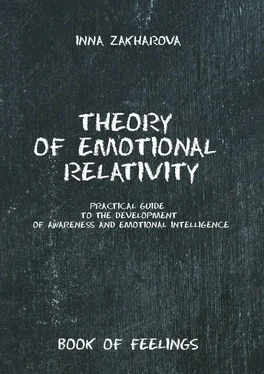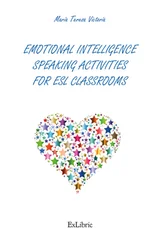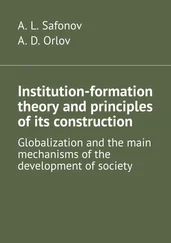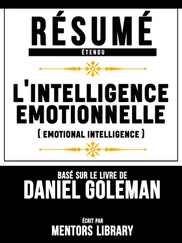Tenderness
Tenderness, deification, intimacy, affability, love, sympathy, acceptance, admiration, communion, worship, heartiness, adoration, goodwill, kindness, warmth, gentleness, affection.
Surprise
Surprise
Any emotion is information about the degree
of satisfaction of psychological needs and energy
for actions that can satisfy these needs.
Besides the fact that you need to be able to notice and recognize an emotion, you must be able to use the energy that appeared in the body due to biochemical processes, in other words – to process an emotion. Otherwise, this unused energy will destroy us from within. So unplanned emotions first lead to tension in the muscles, which accumulating, passes into clamps and blocks, disrupts the proper blood flow and eventually transforms into physical body diseases.
Unfortunately, most people do not have a focus on emotions, people know one thing for sure – there are negative emotions that you don’t want to experience, but there are pleasant emotions, but they need to be earned and not to be shown to anyone, as they are not decent and too personal.
Actually real emotions are sincere; this is information that exposes us to real ones. Not many people in the modern world are ready to take off their masks and face themselves true, and to show others – just beyond the line. But there is no other way to happiness, if you do not want to be happy, do not read on this book.
Life Cycle of Emotions:
• Sensation
• Awareness
• Mobilization
• Action
• Final contact
• Satisfaction
• Withdrawal
Life cycle of emotions is described in Gestalt approach.
At first, an emotion is born somewhere deep in the subconscious, we still do not know, but it already exists. Then it rises to the level of our inner sensations, at some point it is not yet visible from the outside, but already at the level of sensationsit let itself know. The next stage of the life cycle of emotions (mobilization)begins when the emotion expression covers the whole body, when each of its cells responds to the call. At this moment we are processing an emotion, we allow it to express out-of-body. This is very important, it is healing the body. Emotions that we do not process hide inside our body. As our emotions are not only information, but also a large amount of energy, which has its own characteristic and direction, this energy gets stuck inside our body and begins to destroy it. The next stage in the life cycle of an emotion is action. What does it mean to understand an emotion? Firstly, it should be noted what it is and give it a name. Only then we can say that we have realized the emotion. The process of action does not end there, it is very important to decipher the information that the emotion carries.
Why has it appeared now?
What does it mean?
What important things are happening with me now?
The energy that is contained in any emotion is designed to meet our current psychological needs, so it is very important to ask yourself important questions and direct your activities to an acceptable and ecological way to get what you want.
And then the next stage begins – the satisfaction stage, in which we transform the energy of emotion into our real actions. Thus, the transition to the final stage – the withdrawal of an emotion is smoothly carried out. We can say that an emotion leaves our body, giving an empty space for other emotions.
Here is such a natural life cycle – birth (sensation), adulthood (awareness), mobilization, action, transformation (final contact), satisfaction, withdrawal. This cycle is suitable not only for emotions, but also for any life processes. It is important to understand how necessary it is to process emotions, otherwise severe conditions and illnesses will not keep you waiting.
For various reasons, people express emotions differently. In order to allow emotions to be shown, you need some inner courage, an inner willingness to see your needs and stop considering them as weaknesses. The ability to admit sincerely your needs is the position of a strong person.
But instead, we often protect against our emotions, hide them under different masks guiding by various limiting beliefs.
4 Types of Expressing Emotions
1. Switching off.I feel, I notice what I feel, but I decide not to express this feeling as the time and place are nor suitable. And in general, emotions are bad, so I do not express them outside.
2. Ignoring.I feel, but I don’t even know how I feel. I do not recognize and block any emotion. Consciousness blocks information about the emotional state. Such people to the question “What do you feel?” always answer that everything is OK.
3. Processing.The most resource and ecological way to express emotions. We touch each stage of life cycle of emotions.
4. Reacting.The most usual way to express emotions. People around us use it very often. At the moment when the emotion was born, you wisely thought that this was not the time and place for its expression. So you tolerated and suffered. Some time passed, you moved to a different context and there you acted out this emotion, let it show. For example, you didn’t cry not at a party, but at home, expressed dissatisfaction not in the store, but in the kitchen with his family, was angry not at his colleague, but yelled at children at home. But as this process is all unconscious, we do not realize whom the emotion was actually directed to, what it tells us, we simply respond to the one who comes to hand.
The most difficult thing is to develop emotional intelligence for people who tend to forget information about their emotions, completely block it, especially if this happens from childhood, if it is already a family culture of dealing with emotions. It is not at all easy to find contact with one’s own feelings in this case, as they need to be explored from the very beginning. It is not easy, but possible! This is hard work that can only be done in a state of high awareness and a very strong contact with the body.
Welcome to the world of emotions…
Fear is a fundamental emotion, because the purpose of fear is to save life, this is its main goal. If we talk about the life value, fear is never too much, there is nothing more valuable than life.
We face fear too often, because it is primarily to take care of life. It controls our actions, if it were not there, we would not understand at all where we could stumble and fall, it would not even occur to us. And even if we stumbled and fell, we could not use this experience on a simple logical level, because this painful experience usually reminds us of fear.
Pain is some kind of harm to the body, the highest degree of pain usually leads to death. Even when we pricked a finger and got the experience of this pain, the next time we’ll be afraid a little bit of such a situation, but we feel fear. So we should think in this direction when we talk about fear, because in our brain there are ancient departments that work very quickly at the level of instincts. In these parts of the brain (the reptilian brain, the limbic system itself), very strong primitive pain-fear relationships are stored. If we are very afraid of something, it means that our ancient brain perceives the situation almost as a situation of “life and death.” And only owing to the “modern” part of the brain (cerebral cortex) we can reorient ourselves and help ourselves cope with this fear.
Читать дальше












